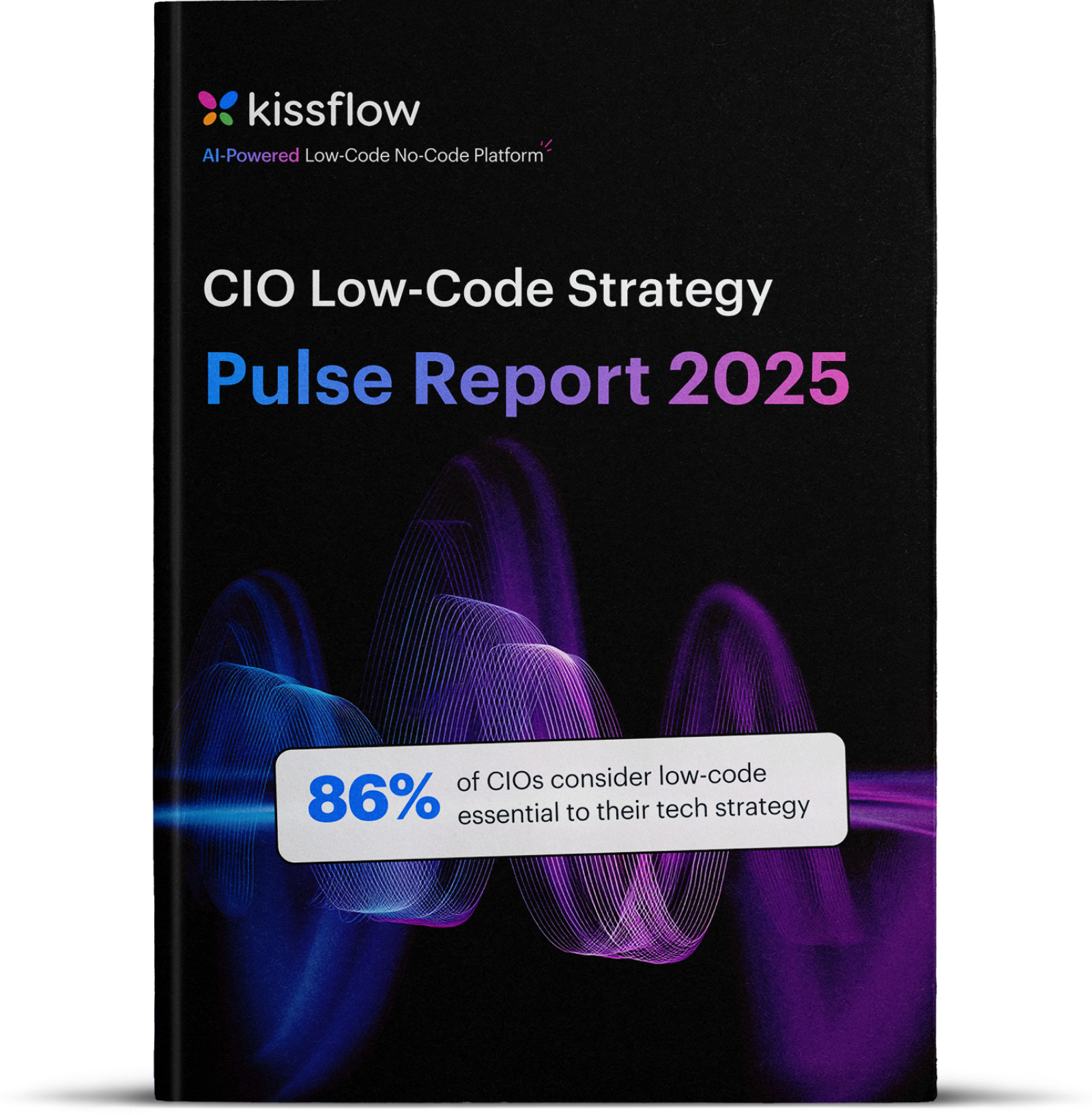
No-Code for Non-Profits and Social Impact: Build Quick, Scale Fast
Non-profit organizations operate under constant resource constraints. Every dollar spent on technology is a dollar not spent directly on mission delivery. Every hour your team spends managing systems is time they're not spending helping communities.
The traditional technology playbook for non-profits doesn't work. You can't afford custom development. You can't hire dedicated IT teams. You can't wait months for solutions. But you can't operate effectively without modern digital tools either.
This is exactly where no-code platforms change the equation entirely.
How can non-profits use no-code effectively?
Non-profits are discovering that no-code tools democratize technology in ways that align perfectly with their operational realities. By 2024, 80 percent of those outside the IT sector will be involved in creating IT products and services, with more than 65 percent utilizing low-code platforms.
Think about what this means for your organization. Your fundraising coordinator can build a donor management system customized to your specific workflow. Your volunteer coordinator can create a scheduling application that handles your unique program structure. Your grants manager can automate reporting processes without depending on technical resources that don't exist in your budget.
The shift is already happening. One notable example: a nonprofit helping students find scholarships built their entire platform in just one week using no-code tools, achieving over 20,000 iOS downloads. Another organization enabled legacy gift pledges exceeding $14.3 million through a no-code platform, completely transforming their fundraising capacity.
Project Lifelong provides another powerful example. They initially relied on Microsoft Access databases, Excel spreadsheets, and paper-based reporting. These outdated tools couldn't keep pace with growth or enable real-time communication with remote volunteers. After moving to a no-code platform, they built a comprehensive member database with two-way texting, email communication, web-based applications with electronic signatures, and role-based credentials for data security.
No-code tools for social impact
The applications extend across every aspect of non-profit operations. Donor management systems can track relationships, automate acknowledgments, segment audiences, and generate reports without any coding. These aren't simple databases. They're sophisticated CRM systems tailored exactly to how you work.
Volunteer coordination becomes dramatically simpler. Build applications that handle recruitment, scheduling, communication, training tracking, and impact reporting. Volunteers get mobile access to schedules and updates. Coordinators get real-time visibility into staffing and can respond quickly when situations change.
Program delivery improves when you can build custom tools for your specific needs. Case management systems for social services. Educational content delivery for youth programs. Health tracking for medical outreach. Event management for community engagement. Each program has unique requirements, and no-code platforms let you build exactly what serves your constituents best.
Grant management and reporting often consumes enormous staff time. No-code tools automate data collection, generate required reports, track outcomes, and maintain compliance documentation. What used to take days of work each quarter now happens automatically.
No-code social impact applications
The technology enables innovation that would have been impossible under traditional development models. Consider impact measurement. Non-profits need to demonstrate outcomes to funders, but tracking and reporting impact is resource-intensive. No-code platforms let you build custom data collection tools that capture exactly what matters for your programs.
Mobile access becomes standard rather than aspirational. Field workers can input data directly from communities they serve. Program participants can access services through mobile applications. Board members can review real-time dashboards showing organizational performance. All of this happens without the budget and complexity of traditional mobile development.
Integration with existing systems extends your technology ecosystem. Connect your donor database to your email marketing platform. Link program enrollment to calendar scheduling. Synchronize financial data between grant management and accounting systems. No-code platforms typically offer extensive integration capabilities that make your disparate systems work together.
No-code charity workflows
Workflow automation removes friction from operational processes. Donation processing that triggers automated acknowledgment emails, updates donor records, and generates tax receipts. New volunteer onboarding that moves through background checks, training assignments, and credential provisioning automatically. Grant application processes that route through approval chains and maintain audit trails.
The cost implications are substantial. Organizations report development costs dropping by factors of three to four compared to custom development. Maintenance costs drop similarly since updates don't require developer time. For resource-constrained non-profits, these savings translate directly to increased program capacity.
Time-to-deployment accelerates dramatically. Solutions that would take months through traditional development launch in weeks or even days. This responsiveness matters when you're trying to serve rapidly evolving community needs or respond to unexpected opportunities.
The platforms grow with you. Start with basic functionality and add sophistication as your needs evolve. The barrier to iteration is low, making it economically viable to improve continuously based on user feedback and changing requirements.
How Kissflow helps
For non-profits looking to scale operations, partnering with leading no-code companies for non-profits is an efficient approach.
Kissflow's approach to workflow automation aligns particularly well with non-profit operational needs. The platform handles the complex, multi-step processes common in non-profit operations while remaining accessible to non-technical staff.
Whether you're managing donor stewardship workflows, volunteer coordination processes, grant approval chains, or program delivery operations, Kissflow provides the structure and automation that eliminate manual busywork. Your team spends time on mission-critical work rather than administrative coordination.
The platform's governance capabilities matter for non-profits that need audit trails, compliance documentation, and transparent processes. You're not just automating work. You're creating systems that demonstrate accountability to stakeholders and funders.
FAQs:
1. How can non-profits use no-code to manage operations efficiently?
No-code platforms provide affordable alternatives to expensive custom software or multiple SaaS subscriptions. Small teams can build donor management, volunteer coordination, and program tracking systems. Automation reduces manual administrative work, allowing staff to focus on mission-critical activities. Forms and workflows eliminate paper-based processes, improving efficiency and reducing errors. Grant management applications track proposals, deadlines, and reporting requirements. Impact measurement tools help demonstrate outcomes to donors and stakeholders. Event management systems coordinate fundraising events, registrations, and follow-up. The rapid development time means solutions are deployed in days or weeks instead of months.
2. What common NGO workflows can be automated using no-code?
Donor onboarding and contribution tracking with automated acknowledgment and receipts. Volunteer recruitment, scheduling, and hour tracking for recognition and reporting. Grant application workflows with deadline reminders and collaboration features. Program enrollment and participant management for services delivered. Expense approval and reimbursement processes for field staff and volunteers. Impact reporting workflows collecting data from programs for donor communications. Partnership management tracking relationships with other organizations and stakeholders. Resource allocation processes for distributing aid, materials, or services to beneficiaries.
3. Is no-code cost-effective for organizations with limited budgets?
Yes, no-code platforms significantly reduce development and maintenance costs compared to custom software. User-based pricing scales with organization size, making it accessible for small non-profits. Eliminating multiple SaaS subscriptions by consolidating on one platform reduces total costs. The time savings from automation allow small teams to accomplish more with existing resources. Many vendors offer non-profit discounts or special pricing programs. Implementation without extensive consulting reduces upfront investment. However, organizations should evaluate total cost of ownership including training and ongoing support. Free trials allow testing before committing to long-term contracts.
4. Can volunteers use no-code apps without training?
Platforms like Kissflow emphasize intuitive interfaces requiring minimal training for end users. Using applications is much simpler than building them—volunteers can get started immediately. Mobile accessibility allows volunteers to access systems from their phones without special setup. Form-based interfaces are familiar to anyone who has used online services. However, some initial orientation helps volunteers understand the specific workflows they'll use. Organizations report that users at all skill levels can adopt no-code applications quickly. Building applications requires more training, but using them is straightforward for volunteers.
5. How can no-code support donation management and impact tracking?
Custom donation tracking applications can be built to match specific organizational needs. Automated workflows send thank-you messages and tax receipts immediately after contributions. Donor segmentation and communication workflows enable targeted outreach and stewardship. Impact measurement applications collect program data and generate reports for stakeholders. Visual dashboards present donation trends, campaign performance, and program outcomes. Integration with payment processors and accounting systems ensures accurate financial tracking. Reporting automation provides regular updates to board members and donors. Custom fields and workflows adapt to each organization's unique programs and metrics.
Transform your non-profit operations with smart workflow automation today
Related Articles
- How Businesses Build Applications Without Developers in 2025
- Choosing the Right No-Code Platform: Criteria, Comparisons, and Pitfalls
- Empowering Non-IT Teams To Build Business Applications
- Industry No-Code Solutions: Healthcare, Fintech and Education Applications
- Understanding No-Code, Low-Code, and Pro-Code: A Decision Framework
Related Articles

![Low-Code vs. No-Code: Definition, Differences & Use Cases [2022]](https://kissflow.com/hs-fs/hubfs/low-code-no-code-feature%20%285%29.webp?width=352&name=low-code-no-code-feature%20%285%29.webp)









